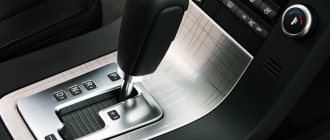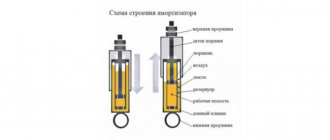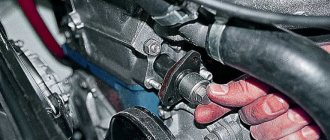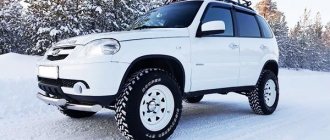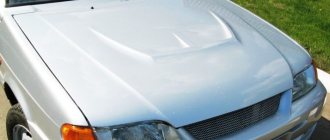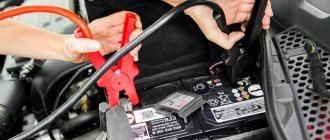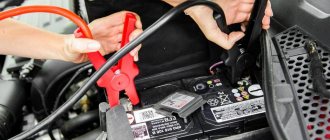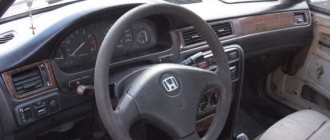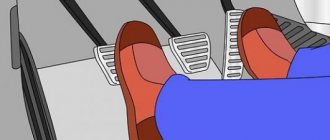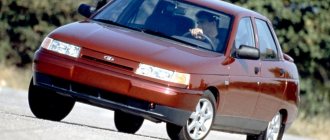If the car has an automatic transmission, then neutral gear will not have much importance for it. However, it is different on mechanics, because there it must be used when passing each traffic light. When driving an automatic transmission, you may not even need to use this gear at all. This is absolutely accurate, but then what is it even intended for? There is no secret here; as a rule, it is required when towing. This means that if the car breaks down, it must somehow get to the service center, and this is exactly what neutral gear is designed for. However, here too it should be used with caution.
Why can't you drive in neutral with a manual transmission?
Where do the roots of these disagreements come from? The fact is that in ancient times, vehicles were equipped with not very powerful engines, which overheated significantly when driving. Therefore, there was a driving style in which it was necessary to let the engine cool by reducing its speed. This was done by turning on the neutral gear.
In addition to the fact that on older engines this caused some cooling, but fuel consumption in this mode also decreased slightly. The logic here is simple. Less revolutions means less consumption. Today the situation with engine power is completely different. They are powerful and have the best cooling system.
Therefore, with a working cooling system, it is not necessary to drive in neutral to avoid overheating. Now, if the cooling does not work, then it is simply necessary to drive at a minimum speed so that the temperature does not go into the red zone. Moreover, the “heart” of a modern car is designed for a much higher number of revolutions than that of its ancestors.
Risks of such driving
Almost all instructors in driving schools strongly recommend that their students change gears when descending, making turns and braking when approaching traffic lights, since in neutral the car becomes unstable and in many cases driving in neutral will not be able to prevent an emergency.
For example, it is very difficult to brake on a slippery road with pads.
In addition, constant braking leads to wear on the brake system due to overheating of the brake pads.
The question of the advisability of driving in neutral arose even when the car was equipped with a carburetor, which did not have an electromagnetic valve, and the fuel supply speed directly depended on engine speed: the higher the speed, the more powerful the fuel pump worked.
Later, for economic reasons, they began to use a forced idle economizer, which cut off the fuel supply at elevated speeds and the throttle valve was closed. In this case, the car rolls forward.
With an injection system, the gasoline supply is turned off electronically, which reduces fuel consumption.
Coasting safety
Next, it’s worth speculating about how safe it is to coast. The Rules have a definition of driving safety, which boils down to the fact that you need to drive correctly in order to avoid accidents. There are three ways to maneuver in neutral that will help avoid an accident:
- Changing the direction of movement by turning the steering wheel;
- By braking with both the service brake and the engine (by releasing the gas pedal);
- Increasing speed and pressing the gas pedal.
Tips for beginners
Having figured out when and how to use neutral gear, there are a few more useful lessons to learn.
Beginners should be given the following recommendations:
- Do not stop and leave the car in position D with the engine turned off;
- from position D the engine does not start because there is a special lock;
- to start you need to go into park or neutral;
- if the start occurs in position N, you must first depress the gas pedal, otherwise the car will start to roll;
- if it is a parking lot, there is no need to press the brakes, since the wheels are already locked;
- Having started the engine at N or P, let it run a little so that the engine and gearbox pump oil through the system.
As you can see, the machine also has its own recommendations and operating features. If you violate these rules, then you may encounter unpleasant consequences in the form of breakdowns and premature wear of the automatic transmission.
Acceleration is not possible
The driver can use the brakes or turn the steering wheel at any time. But to speed up (often you need to speed up to avoid an accident) will no longer work, because you need to engage the gear and press the gas pedal to the floor, and this is a waste of precious time, when not even a second, but a fraction of a second matters.
As a result, neutral gear does not allow you to use all three methods in order to avoid an accident. This may be tantamount to the fact that the car simply does not have a brake pedal or steering wheel. This way, it will probably be clearer for those drivers who want to travel as safely as possible.
Do I need to use neutral with an automatic transmission while stuck in a traffic jam or at a traffic light?
Probably the biggest misconception among motorists who have an automatic transmission, but previously had a manual transmission, is the need to shift the lever to neutral when parking at a traffic light. When driving a car with a manual transmission, we must move the lever to neutral to release the clutch. But the automatic transmission does not have such a pedal, which means there is no need to switch to neutral gear.
To understand the process, it is worth saying that when mode D is operating, the automatic transmission torque converter will pump up the pressure required to transmit torque. This mode also provides lubrication of gearbox parts. If the gas pedal is released, the torque converter will remain in the "green zone", while it will receive lubrication. When you move the lever to the neutral position, you disconnect the output and input shafts, thus stopping the lubrication of the box parts.
After the traffic light turns green, shifting back into “drive” will cause a stress reaction in the gearbox elements, as the pressure will change. Therefore, the parts of the box will perform additional actions, which will adversely affect them and cause them to fail faster. The same situation threatens a car when it is in a traffic jam. There is no need to pull the automatic transmission lever from D to N. If there is no movement in the traffic, you can move the lever to “P” (parking position) or turn off the engine.
Share:
How to brake correctly with manual brakes
Summarizing the above, we can say that it is safest to brake with the gear engaged. This is the so-called combined braking, which saves fuel and prevents the wheels from blocking. The latter, of course, is more relevant for older cars that are not equipped with ABS. The engaged gear also allows you to have a reserve of traction, which can be useful when accelerating or braking the engine.
It is advisable to engage neutral gear only when the car is completely stopped, while proper braking is carried out in gear until the car comes to a complete stop.
Advantages of manual transmissions
Twenty years ago, the most popular were manual gearboxes, which were universal and practical to use. Even today, when functional automatic transmissions have appeared, time-tested mechanics are also relevant and in demand among buyers of new cars.
The main advantages of such mechanical transmissions are excellent reliability, vehicle practicality, simplicity of design, ease of maintenance and repair. If automatic transmissions require high-quality maintenance and frequent repairs, then the mechanics can last for many years without causing any trouble to their owners. You just need to remember certain rules for using such a car, which will allow you to avoid increased fuel consumption and the occurrence of characteristic malfunctions.
"Gluttonous" brake pedal
It is known that braking a car also requires gasoline consumption, just like acceleration. Many drivers forget about this, making hundreds of unnecessary brake presses a day.
There are two ways to reduce the number of times you use the brake pedal. Firstly, increase the distance to the car in front, so that you do not have to adapt to its driving style, and you can maintain the most uniform speed.
Secondly, stopping only with the brake pedal is not the most economical and practical option. The best way to drive a manual is to master engine braking and combine it with the use of the brake pedal. If you are not familiar with how to properly brake with an engine, then watch this short video tutorial to avoid making mistakes.
Breakdown in the torque converter
The car does not drive if you do not monitor the machine:
Problems not resolved above will lead to breakdown of the automatic transmission torque converter. This failure cannot be determined through diagnostics with a scanner. It is necessary to open the automatic transmission “donut” and visually inspect every detail.
Attention! I recommend visiting a service station annually for preventative maintenance. Such measures will help prevent problems with gas turbine engines. This means that you will save at least 20,000 rubles on repairing the automatic transmission torque converter.
Signs
New car owners often cannot distinguish the signs of a torque converter failure. And they blame it on bad oil, low-quality fuel. In fact, there are several symptoms due to which the car does not move due to a breakdown of the gas turbine engine:
I have listed only some of the causes of malfunctions, due to which the car does not drive, related to the torque converter. When they appear, you should definitely visit the service center, so as not to completely change the “donut” later.
Remedies
What we can do to fix the problem and what you need to pay attention to if you understand automatic transmissions:
Source
Improved aerodynamics
The aerodynamics of a car is the level of its resistance to air flow while driving. The more streamlined the car, the less air resistance, which means less gasoline consumption.
It would seem, how can this be influenced? Here are some ways:
Removing the roof will help improve aerodynamics by as much as 10% If you have one, remember the last time you used it? Maybe you don’t need it that much anymore? Then shoot.
You can improve your performance by 5% by keeping the windows closed at high speed. In winter this is not a problem, but in summer, at speeds over 50 km/h, turning on, for example, the air conditioner will be more economical than opening the windows.
Surprisingly, aerodynamics can be improved by about 3% by removing the “fly swatter” from the hood, because this part does not bring a noticeable positive effect.
Warming up the car
First of all, you need to make sure that the car warms up for the optimal amount of time without wasting gasoline, because most cars are quite “gluttonous” at idle. The optimal warm-up time for a manual car is: 1-2 minutes in summer, 4-5 minutes in winter . The main thing is not to accelerate to maximum speeds during the first kilometers of the journey.
Some drivers have the habit of warming up their car for 15-20 minutes, especially in winter, while the average gasoline consumption is a liter per hour. This means that just warming up the car takes more than 10 liters of gasoline per month. At the same time, most auto experts agreed that long warm-up does not benefit the car, but only reduces its service life.
Correct gear shifting
The main point in saving fuel on a manual transmission is correct, timely gear shifting. The lower the gear, the more powerful it is and the more fuel it requires. Therefore, the first rule is not to keep transmissions above their threshold speed limit. For example, for most cars, changing from 1st gear to second is recommended at 20 km/h. Make sure that the speedometer needle does not exceed 20 km/h in first gear. As you approach this mark, move to the second. An even more economical option would be to switch to second at around 17-18 km/h. The car will accelerate a little slower, but the gas savings will be significant, considering that we have to accelerate from a stop hundreds of times a day.
This is interesting: Tire profile - studying the “shoes” of our car!
Problem in the automatic transmission control unit
The first thing you need to pay attention to when the car does not drive is the control unit. There is no need to disassemble the machine, climb into the valve body or attempt to replace the lubricant. Since the reasons that the car does not drive may lie on the surface. Most likely the ECU is acting up.
Attention! A laptop with a specially installed program for checking the functionality of the automatic transmission and a scanner for reading errors will be an excellent assistant for you.
If there are no such tools, then you can try to manually determine the presence of errors in the ECU and understand why the car does not drive.
Signs
Signs of ECU failure if the car does not drive may include:
In addition to these problems, different letters of selector knob positions may appear on the monitor when the selector lever is not in the modes indicated on the dashboard. These signs also indicate a malfunction of the control module when the car does not move forward.
All of the above symptoms can develop in an automatic transmission due to improper operation of the electronic control unit. To check if it works correctly, you need to try to do what I described in the next block.
Write in the comments, has this happened to you?
Remedies
The first problem may be lack of energy. Therefore, you need to check the battery for serviceability and supply of the required voltage to all electronic devices. You can do the test with a multimeter. With the ignition off, the battery voltage should not fall below 12 V.
If everything is in order with the battery, then proceed to disassembling the control unit. At the beginning of the procedure for removing the computer, disconnect the wires from the battery terminals so as not to short-circuit the devices.
ECU repair will not give positive results for a long time. After six months you will have to change it anyway.
Car diagnostics
Even if the car has no obvious faults, it still needs to be shown to a mechanic periodically to prevent breakdowns. Optimally - once every 2-3 months. As for fuel economy, the greatest attention should be paid to timely replacement of the air filter .
Of all the elements of a car, the air filter has the greatest impact on fuel consumption, because... affects the degree of oxygen saturation of the burned fuel. If the filter becomes clogged, the combustible mixture enters the internal combustion chambers with a minimum amount of oxygen, and its deficiency is compensated by an increase in gasoline consumption.
For each model, the frequency of changing the air filter is different, but I advise you to change it at least every 10,000 km, because it is not expensive, and you do not need to go to a specialist to replace it. In addition, every 2-3 thousand km the air filter can be shaken out of accumulated dust, which will also have a positive effect on gasoline savings.
Wheel inflation
The tire inflation level is an individual indicator for each car. However, it is important to monitor this level not only visually, but also by periodically measuring the tire pressure using a pump. It is a known fact that underinflated or overinflated tires negatively affect both fuel economy and tire wear.
If the pressure in your wheels is stable, then you need to check and, if necessary, inflate the wheels at least once a week. If one of the tires constantly deflates, then it is better to solve this problem at a tire shop than to pump it up every day.
What happens when you turn on "neutral"
So, it is important to note the following: when you move the automatic transmission selector to the “neutral” position, the automatic transmission input shaft is disconnected from the secondary (driven) shaft.
The engine starts to operate at idle speed (700-900 rpm), the pressure in the automatic transmission lubrication system decreases by almost 2 times the pressure in the “drive” mode.
If you turn on “drive” after “neutral” on a moving car, in addition to the fact that the clutch moment of the gears will be more noticeable, the load on the gearbox will also increase due to the need to coordinate the speeds of the shafts.
Therefore, it is advisable to turn on “drive” when the car is stationary.
Source
